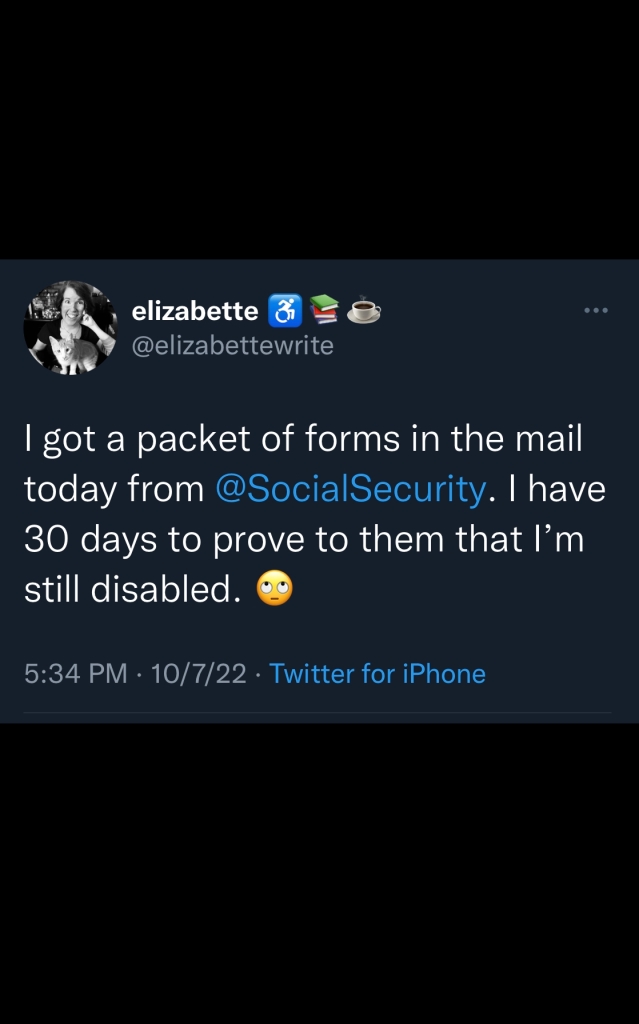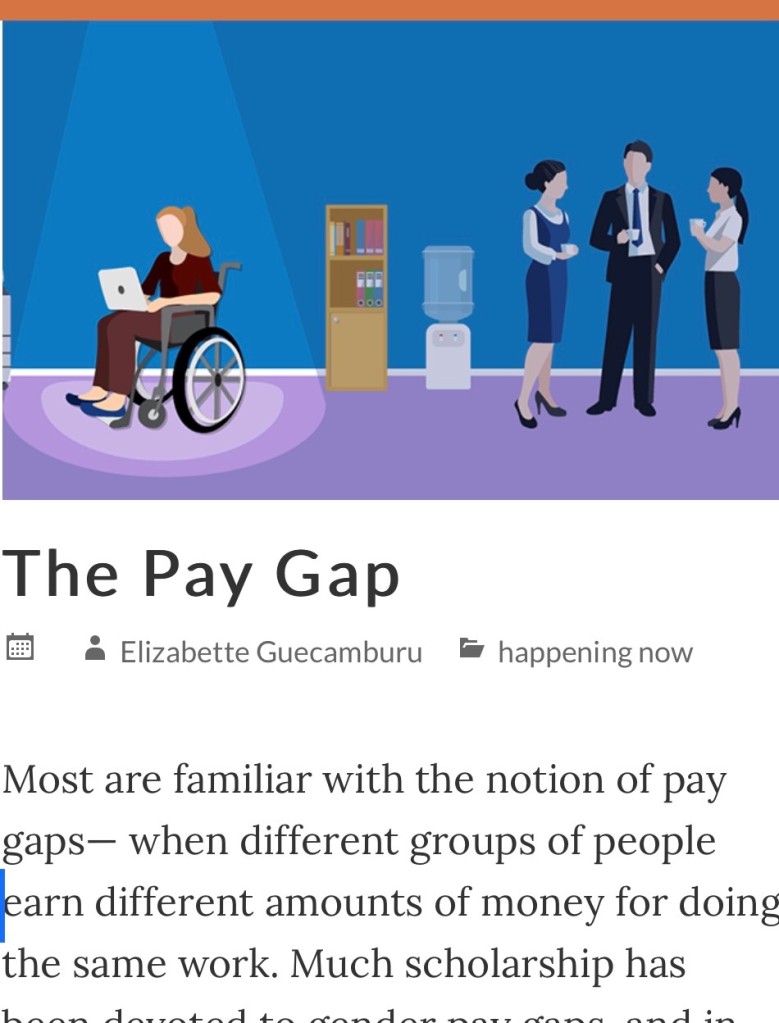This blog post will be a little more serious than my usual ones. There will be fewer cuss words, fewer jokes about politicians, and fewer references to pumpkin spice products. But, please keep reading, anyway.
A few weeks ago, I was invited to speak at a conference about my disability— Spinal Muscular Atrophy. This conference is a way for medical professionals to learn the newest research and collaborative ways to improve patient care. As a person with SMA, they wanted me to offer my perspective and feedback to the attendees.
I quickly agreed. Highlighting the lived experiences of disabled people is something that is often missing from events like these. Nothing annoys me more than having nondisabled people talking about how best to “care” for us without any effort to elevate our disabled voices. So, any chance I get to promote disability awareness– I am definitely going to take it.
So, I was all-in on speaking at the conference. After all, the knowledge that I have as a person that has lived with SMA my entire life is just as valuable (if not more so) than a doctor with four framed degrees on their office wall.
I started planning what I would say. What to wear. What topics seemed important to me. How I needed to make sure not to use any four letter words– which I tend to do, even when I don’t mean to. (I’m working on this. Really.)
However, after I happily agreed to participate, I found out something that changed everything. Masks were voluntary at the conference— they were not required. And the only way I found this out was that I had to directly ask an organizer about this safety protocol. If I had not asked, I would have shown up to the event unaware of this.
So, in summary:
A medical conference about Spinal Muscular Atrophy (one of the most complex, deadly genetic diseases in existence) seemed to be okay with not making masks a requirement to attend their event.
The reason for this decision? The conference organizers didn’t want to “impose additional requirements” on attendees. (The targeted demographic for the conference being medical professionals— who are nondisabled).
Yet, it didn’t seem to register that they were now hosting an SMA conference where an actual SMA person doesn’t feel comfortable attending.
Now, I know I’m not in PR, but this doesn’t have good “optics.”
In addition, many of these medical professionals will interact with high-risk SMA folks regularly. They don’t think a masked event is a good idea? I’d think the only thing they’d want to bring home from the conference is a free T-shirt and a stale poppyseed muffin from the breakfast bar— not an infectious disease.
To be perfectly honest, when I learned this, my stomach dropped. I felt nauseated. I felt tears prickle the corner of my eye. (It’s ableism at its most basic— prioritizing the wants/whims of the nondisabled to the disabled’s exclusion.)
Yet, a part of me was not surprised given how the world is trying so hard to return to normality. But, for those with SMA (and other disabilities) we’re endangered when society tries to act like the last 2.5 years didn’t happen.
Disabled people, especially disabled people of color, have had the highest mortality rates for COVID-19— and the lowest access to health care. This pandemic has been real to us in a way that it hasn’t been for other people.
The trauma of this continues for us each and every day. Yet, while society is now trying to “live with the virus,” disabled people are the ones more likely to die from it.
As a result, within the disability community, masking is seen as a form of accessibility. Like elevators, ramps, ASL interpreters, closed-captioning and large-print. Masking (along with testing and vaccines, of course) allows high-risk people to participate in society more safely, securely and fully. It is a way to say, “I care about you. I see you. I want you here.”
Therefore, despite my initial enthusiasm, I won’t be attending this SMA conference. I am disappointed and sad. Disability can be isolating, and it cuts a little deeper when society displays such obliviousness.
So, I am left with this final suggestion: if you are planning a public event, please consider the disabled when you do so. By going beyond the basic policies of your city/school/company, you can ensure your event is more accessible and inclusive. (After all, those policies were made for political/economic reasons that suit the nondisabled masses. Not people like us.)
Don’t forget: the disabled will never be able to take a seat at the table unless we feel safe to do so.
It’s up to you to help make that happen.
UPDATE: Upon reading this blog post, conference organizers changed the policy to make masks mandatory. As a result, I decided to participate in the event. While I am happy they reconsidered, I’m also disheartened by the lengths that disabled people like me have to go simply to have our needs met. This extra labor is exhausting— especially when many of these accommodations should already be in place. —E.









